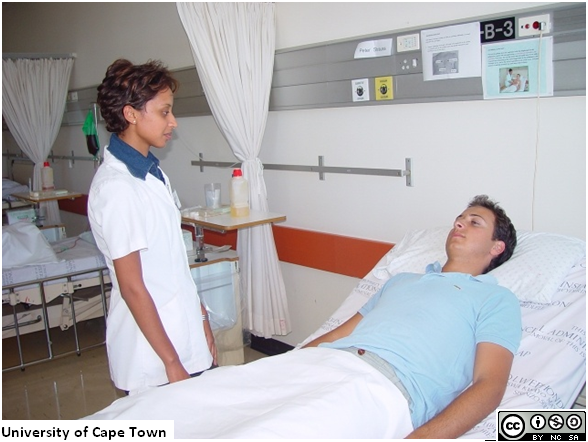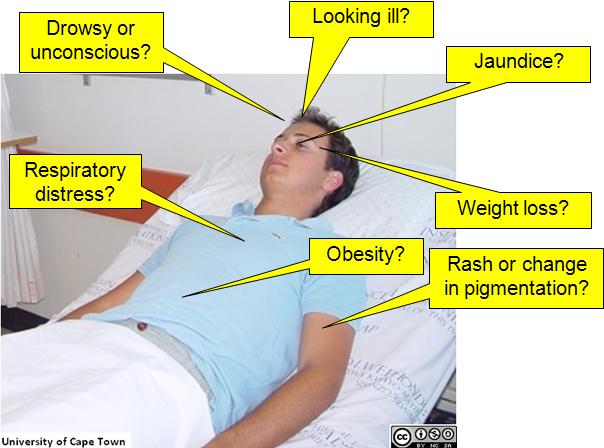Examination Techniques
The techniques of physical examination are in themselves simple, and easy to master. All that is necessary is that you observe carefully, pay attention to detail, and practise repeatedly.
Physicians do vary in their techniques of examination. Shown here are a single set of techniques which are both simple to employ and reliable. Your tutors may however make use of slightly different techniques themselves. We suggest that, initially at least, you learn to use the techniques shown here confidently, so as not to become confused.
Practice
Practice of your examination technique is essential, and you need to see as many patients who demonstrate abnormal physical signs as possible so that you can learn to recognise them.
During this presentation, we shall demonstrate the following:
- Preparing the patient for examination
- Describing the patient?s appearance
- Looking for pointers to the problem around the bedside
- Examination for general features of illness
- Examination for features of specific illnesses
- Taking the pulse
- Assessing warmth, perfusion, hydration and temperature
- Looking at the hands
- Looking at the eyes
- Looking at the mouth and pharynx
- Finding lymphadenopathy
- Looking at the legs
Looking at general appearances
Do not rush this very important step. Look carefully at your patient. Among the important observations which you must make are as follows. (Read about these and ensure you understand their significance.)

- Well or ill
- Facies
- Deformities
- Rashes
- Scars
- Mood

It is also helpful to look for clues in and around the bed which may help you to assess the nature of the problem. For instance:
- Oxygen. Is the patient receiving oxygen?
- Drips and intravenous therapy.
- Sputum or vomitus. Are there any containers near the bed containing sputum or vomitus, which you may inspect?
